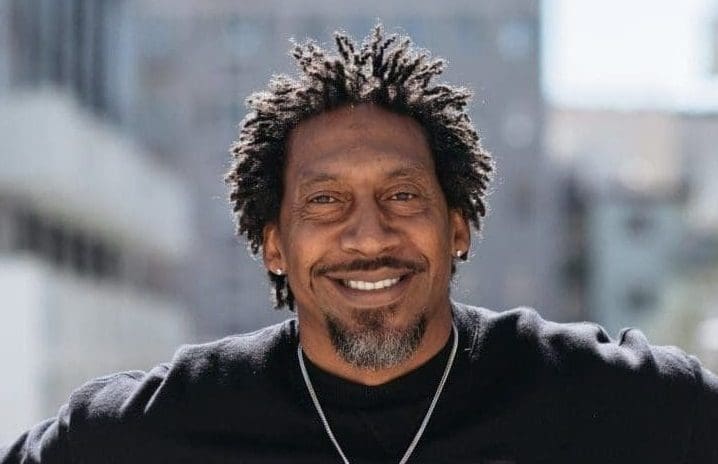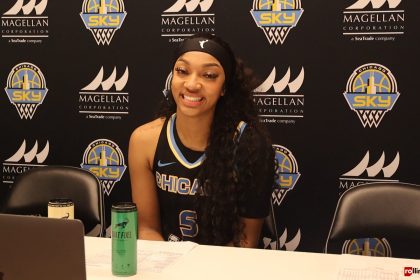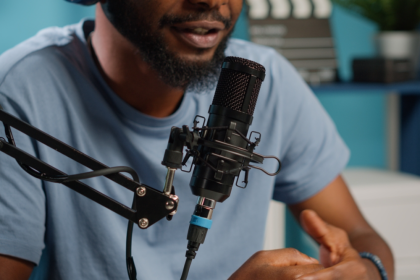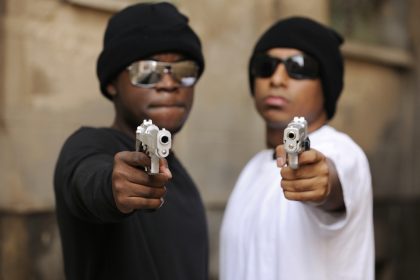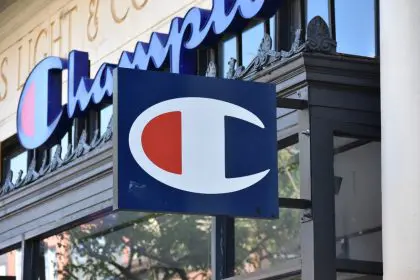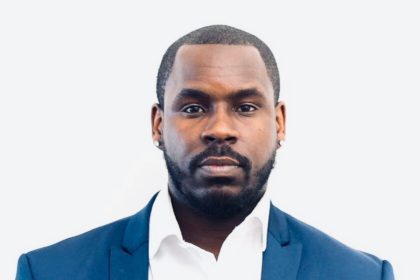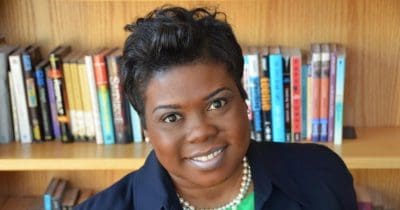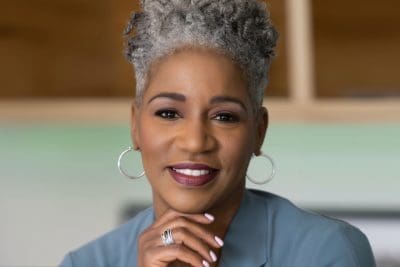Daryl Butler is a dynamic, results-driven senior executive with over 25 years of broad-based, progressive experience in marketing, sales and finance.
During his decorated career, he has worked with iconic brands such as Beats by Dre, Nike, The Jordan Brand, Boost Mobile, Walt Disney, and most recently, HP, Inc. He’s exhibited an effective combination of creative and analytical leadership skills driving revenue and increasing profit margins. Daryl’s also proven to be adept at big-picture strategies while paying attention to being surgical about the finest details.
A Morehouse man who has been Vice President of Marketing for Google Devices and Services for nearly three years, Daryl is responsible for the U.S. business, including Strategy, Insights, Brand Management, Campaign Development, and Third-Party Retail Programming.
Daryl received a Dual-Degree B.A. in Marketing and Finance from Morehouse and an M.B.A. from Pepperdine University. He is an active member of his community, serving in various capacities with his church, local YMCA, college alumni association, and Omega Psi Phi Fraternity.
[Editor’s note: This is an extended transcription. Some errors may occur.]
Munson Steed: Hey, everybody! This is Munson Steed and we are on rolling out. This is EXE, where you meet the executives that clearly have a vision, big branders, big marketers. But clearly, this one young man, who truly has a vision that is beyond just this moment in time. He has seen the evolution of both marketing, advertising, creativity, and more. I’d like to welcome my dear brother, Daryl. Brother, how are you?
Daryl Butler: I’m doing well, Munson. How are you? Thanks for having me.
MS: I’m phenomenal. You wear many hats, but literally, for those who don’t know, what is your day-to-day? Just in life and at Google.
DB: Wow! Well, every day is different. The only thing in common is they all end in “y,” quite frankly. My operation covering marketing for our Devices and Services division is an interesting one. One, because folks think of Google, and they think big, huge, mega-conglomerate company, which, rightfully so–household name, maybe a verb and pretty much everyone’s lives but devices and services. When we start thinking about Pixels, our smartphone division, the things we do in home automation with Nest products and the things that we do from a health perspective with Fitbit.
Most folks don’t necessarily associate Google with those things. So, one of the things that I continue to push the boulder up the hill on, is being a challenger brand in the space that we’re in, especially given the amount of mind and heart space that Apple and Samsung have. So that keeps me busy. Outside of that, it’s really just getting accustomed to being in the Bay area. I’m an L.A. guy. So, this wind and wet rain and this is just taking some getting used to but I’m finding my rhythm.
MS: You gave great insight and I just imagine we’re gonna have to get you to go back over to your alma mater, Morehouse, and talk about it. But for young people who really have not — and I applaud you — been able to be in the tech space to market devices, what should they know that they’re up against, and why?
This is an opportunity for them to immerse themselves on maybe even becoming more reviewers of our products. Put Nest in the house and understand it, but that is, get with Fitbit. And really going, why should they immerse themselves and become reviewers of this product for the marketplace?
DB: Yeah, there are two interesting dynamics at play. One is marketing as a discipline is a transferable skill. You can market CPG products, you can market apparel, you can market automotive, you can market liquor and beverages right? The interesting dynamic when you think about tech is, the pace of play is very different. The velocity with which technology turns over is something that you have to get accustomed to. So what you did yesterday might not apply today, simply because the technology has evolved, right?
The offerings have evolved and the consumer requirement with regard to technology continues to change, right? And it’s this interesting reciprocal relationship that exists between the consumer and tech and tech and the consumer culture, right? These things, they rely on each other, kind of a codependency. So what I would say to somebody who was looking at understanding how to navigate the tech spaces [is that] understand that functionally, a lot of the roles and skills are transferable.
We have finance people, we have legal folks, we have marketing folks, we have those types of things. So, those are transferable functions. The application of that function in the tech space is something that you have to grow to understand. So, there is something to be said about understanding the products, the services, and again, the pace of play, just to understand how to apply the discipline next year … in the environment that is a technical world.
MS: Question, for those individuals who want big-culture moments. You’ve made some of the biggest creative impacts during culture moments. Can you share how data plays a role in that whole decision making on the why?
‘The balance between being Picasso and Einstein’
DB: Yeah, yeah, what data is like, absolutely an imperative, especially at Google, right? I’ve come from organizations. I always use this analogy as a marketer, finding the balance between being Picasso and being Einstein, right? There are certain organizations out there that may lean towards Picasso, that is, they market from the gut, from the heart, which is not a bad thing. Then there are organizations that are far more cerebral about the way they approach marketing. They market from the mind and the use of data, and then intelligence.
I think the brands that break through are the ones that understand how to do both. And I happen to be in a place where I’ve had the luxury and the benefit of being trained up using both and being able to apply them both. So, when we think about big moments like Super Bowl, clearly, you want to make sure that work is going to have resonance and tap into an emotion. Whatever that motion is, it could be happy, sad, whatever. But you have to understand the data that is going to inform the best way for that story to evolve for the consumer.
And it’s not just about the 30s [30-second ads] in the second quarter, it’s about everything that happens around, leading up to through, and even after a big moment. Now you can insert Super Bowl, you can insert Oscars, you can insert Grammys, I mean, you can name a few different moments that have big stages. But what happens around that stage is just as important as what happens on that stage.
MS: You drop in the science and the guide doesn’t understand what you mean around the stage, and how early it begins. What’s around the stage? What’s after the stage? For those people really aren’t gonna be and we’re inviting people into that room, and you sharing this so that they can really get an idea that it’s not just the review of what those were. But what’s around that stage?
DB: Good question. I would look at it as everything that leads up to a moment. And that’s where you get to the insight, that is something meaningful, that connects the brand, its purpose, the product and the consumer. That’s all the inside work that happens well in advance, and if we stay with the Super Bowl moment. We started working on an idea for Super Bowl back in September, October of last year, and during that time what we were trying to establish is what’s gonna be our brand’s point of view. How is product going to be center stage? Who is the audience that we want to engage with? And what do we want them to do with what we share?
So we’ll spend several months leading up to getting to that core idea. That’s pre-game, that’s before you get on stage. And in that timeframe, what we established that Super Bowl meant for us was lining up this idea that we innovate with intention and that is Google’s whole main purpose. The Master Brand is about being helpful to everyone. So we took that and said, “Okay, with being helpful to everyone means making products that everyone can use. And if we double down on that concept, we landed on this idea of guided frame, which is a technology that is AI empowered. Which clearly is an important thing these days. That allows for folks who have visual impairment to still enjoy life using smartphones specifically, camera computation and camera technology. So we decided we would lean into that.
All of that stuff is all the pre-game. The stage is the story. That’s the 30s or the 60s that runs during the Super Bowl. Around the stage is all of the things that we do on social. It’s all of the things that we do through our digital platforms. It’s the partnerships that we have with the association of blind athletes. You know things that we do with specific people, who are visually impaired. The actual director of the spot itself is a visually impaired director. So there’s a whole story that we can tell with him and this all represents the things that I call around the stage, or what we call surround sound.
MS: I love that and clearly we on the struggle bus with the thing. But I love the fact that now you’ve given people access to this information but for those of you who don’t know. How do you tune into culture? You say you got New York. You understand what that is. You know what LA is. Cats really believe, I understand culture, but you’re not tapped into New York. We have no idea the difference between the Bay culture, Houston culture. How do you stay tapped in? And why is it important to really understand how to tap into culture as a marketer and clearly a marketer executive, who has everybody pitching you an idea?
How Google taps into the culture
DB: Yeah, staying connected to culture is about staying curious. I’m a little longer in the tooth than a lot of the gutters out there these days. But I like to think that I stay connected because I keep one foot literally and figuratively in the street, and the other foot’s in the boardroom. I spend time with young people, regularly. I have whisperers, what I call whisperers at just about every corner of the world. Somebody taught me a long time ago. You need to have people who know more about the thing than you do, that you can always pick up a phone and call.
What’s going on in the world of global football? What’s happening with music in Europe? What’s going on with Afro beats? I can ask those questions, and then, being in the street means not being in the clubs and not hanging out, but just being tuned in to what is happening, and being able to ask the right questions, to get the right information. And you can use that information, data to inform what kinds of stories are best being told, how I can demonstrate my fluency, when it comes to the things that are bubbling.
And then I can define what purpose I can serve in that cultural sphere, whatever that might be, whether it be music, art, fashion, sport. So I think the idea of being connected to culture means living it or having a really strong bench of whisperers around you who live it even more than you do that you can tap into.
MS: I love that. Let’s talk about some of your favorites: one music, one just art or artists. That keeps that everlasting long vision of creativity going for you? Who do you tap into?
DB: Wow, man! Well, one of the things I’ve started to really love is this idea of the Renaissance man. If we go back to the early 1900s, this idea of being a Renaissance man meant you were capable of doing multiple things. You were part philosopher, you were a musician, you were an artist, you were a writer, and the people that are really got my attention, or I look at somebody like Pharell Williams.
Not only is he a musical savant, but clearly he is emerging as a force in the apparel world. He’s always been thought-provoking, not only in terms of the music that he makes, but just in his opinion around things that move culture. So, I look at people folks like that, more specifically, in the sports world, what’s interesting to me is athletes who have figured out how to use their stage to have more impact than the sport that they play.
Yeah, obviously somebody like LeBron comes to mind, somebody like Steph Curry comes to mind. These are people who are transcending the sport that they play because they have an interest in serving their communities. I’ve been part of some of the programs that both have run. And I’m completely infatuated with how they are literally taking the stage based on their God-given talent and using it to actually empower other communities and the like.
So that’s the kind of stuff that I’m really tapped into right now, is just seeing folks that are, what I call mushroom clouding out of their primary focus, and having that cloud have more impact than just the thing. The one singular thing that they do.
MS: I love that, and I love the examples cause it seems to give people a purpose. And you’re kinda driven on that purpose, even as a Renaissance man yourself. When you think of what I would consider a Renaissance. Your favorite campaigns like you, you say to yourself, I saw that I wish I did that. What’s kind of you where you’re kind of. Obviously, we’re not, Oh I’m jealous. They’re got a job. Literally are like, wow! That was a creative moment in the space that moved the culture and then it moved in an unanticipated way. What campaigns have you seen and just made you say “Wow”?
Brand campaigns that impressed Butler
DB: That’s a long list, Munson. But I think I go back to, and I look at those, the brands that really do understand how to move emotion and psyche. Brands that have the ability to affect us in a positive way. Nike’s campaign around Let me play specifically, empowering women to stay connected to sport. Brilliant! Because you look at what the WNBA is doing. You look at the inaugural season of NWSL or even just women in sport generally, that are making a statement, improving that not only is this a great stage, but it is an empowering stage for women.
You think about women in music, is something else that I find just. When I see brands that are leaning into causes but the causes have depth. and they exist beyond just a certain demographic or a certain psychographic or a certain gender where everybody is moved. So you know some of the things like Let Me Play come to mind. Quite frankly, I’m proud of some of the work that I did at Beats. When we said everybody needs to be proud to be from somewhere straight out of. This was attached to a Straight Out of Compton movie. This was based on an insight that came from Dre and Ice Cube that everybody needs to be proud to be from somewhere.
I’m proud to be from Compton. And you know we turn that into something that allowed for the world to basically say, I’m proud to be where I’m from. Wherever that was. Cottage Park, the Bay area, Vallejo, San Diego, or somewhere in the Middle East, it didn’t matter. So when you can have things that have transcendent power like that and still have a story anchored in the middle of it. That’s the kind of stuff that I think is just award-winning work.
I mean what we did with Real Tone a couple of years ago. Again, this idea of everybody deserves to be seen. There’s the physical manifestation of that with the camera computation modeling with Real Tone built into the pixel device. But then there’s also a psychological and emotional part of being seen. Especially people with different tar skin tones. So, for us to be able to take those two things, put them together and drive a product story, but also lean into an emotional and psychological perspective. Seems to me like you got the best of both worlds.
So now you’re empowering a community to actually be able to want to be seen. So I look at things like that and usually those are the ones that resonate with multiple audiences, and they have the lasting power. So they become very memorable.
MS: You mentioned that and all of this is technology-driven. You’re a huge market. You are award-winning, creative. But you now have a new partner in your creativity called AI. We’ve seen things that are. [How do we] lean in and understand that it will empower.
DB: Yes, this is an ongoing discussion, and we’re at the very nascent beginnings of what AI is capable of. But I always say this anytime that I have a conversation about it. Every thought still starts with a human, full stop. The every thought still starts with a human. So what AI will enable or will allow, is the speed with which that thought is manifested, or the accuracy with which it will come to life, with the right guardrails.
We talk about being bold and responsible here at Google when it comes to our AI initiatives. And I think that’s the right approach, because it has the ability to change the velocity. I talked about pace of play earlier. It has the ability to change the velocity with which we can actually interact with the consumer and the consumer can interact with the things that they love. But it still has to be initiated with the right thought from the human.
And when I think about the creative process. There’s no difference. I might have a great idea, but I might not know how to actually bring that idea to full fruition for a broad swath of audiences. I might have a very limited approach to the way I’m thinking about things. When I bring that to an artificial intelligence model. What will give me is the stuff that I don’t see, so it will give light to my blind spots, and then I can choose what I do with it. That’s the other thing. So it’s not this enigma that’s gonna go off and do all these things without my saying so. I have to initiate the thought, and I have to look at that final product. Ah yes, this is something that I want to be part of my story. So it’s all part of the same continuum in my mind.
MS: It’s funny, it’s like you are the artisan and you’ve given us the opportunity to add some more colors to the palette. I think that’s the most beautiful thing about it. I just want to thank you for sharing this and educating us all and really just making it real simple to understand that it’s the marriage of the art and the science, and that we all have to play our part in this world and making sure that we’re helping to move it in a better direction. I can’t thank you enough.
DB: No, I appreciate the time and the opportunity. And I will always use this as a platform to share that I didn’t get here on my own. I had a whole bunch of people helping me, whispering in my ear, and giving me opportunities. So, for all the young folks that are out there listening, keep pushing. You know, keep your eyes and ears open, and when it’s time for you to shine, just make sure you shine bright.
MS: I can’t thank you enough for this moment, man. This is what’s called life, baby! This is Munson Steed. This is rolling out, and I can’t thank you enough.
DB: Always, brother. Always.

